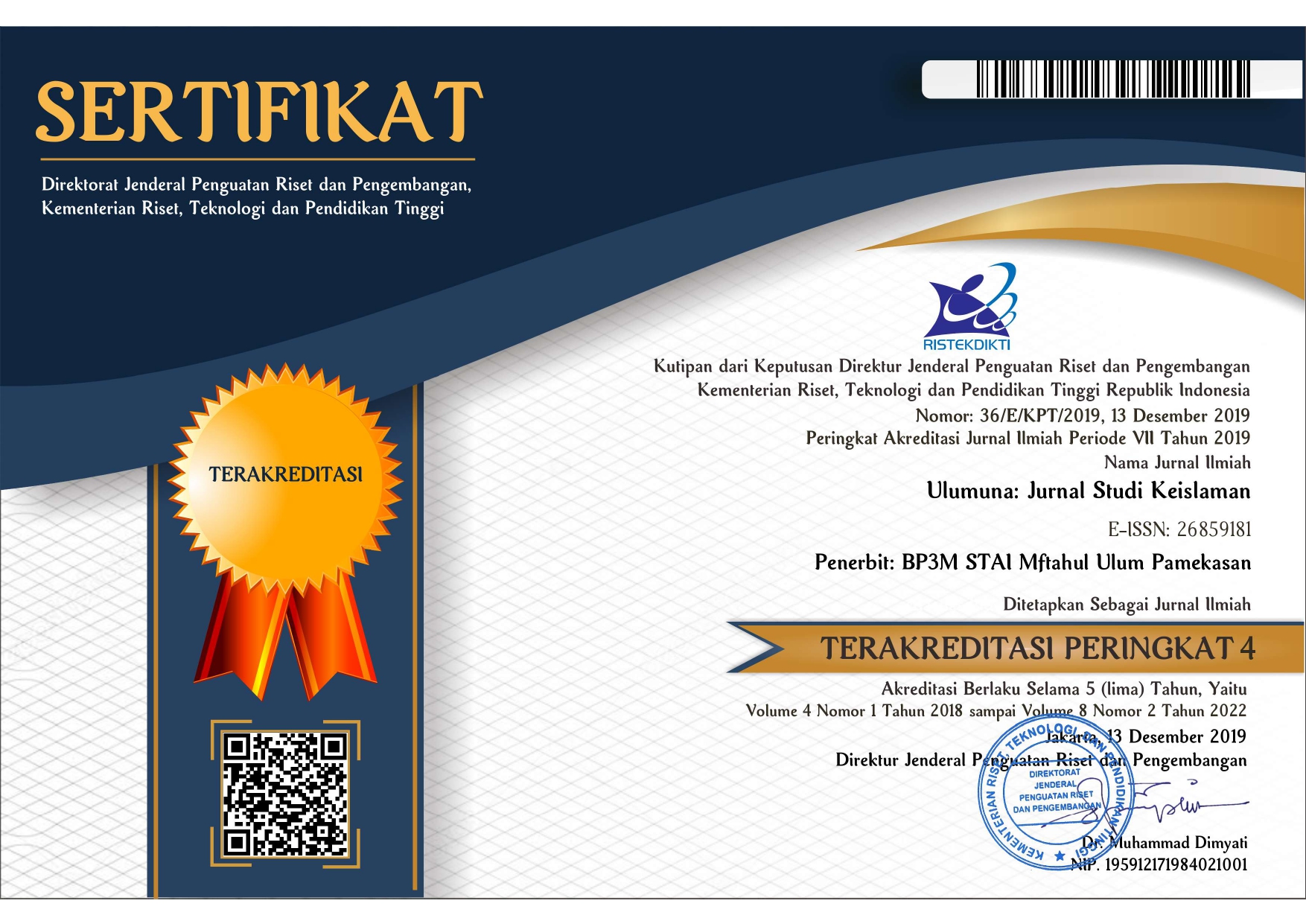The Tradition of Ratib al-Haddad Recitation at Pondok Pesantren Salafiyah Syafi'iyah Sukorejo-Situbondo
A Phenomenological Approach to the Meaning and Experience of Santri
DOI:
https://doi.org/10.36420/ju.v11i1.7859Abstract
This study examines the tradition of reading Ratib al-Haddad at the Salafiyah Syafi'iyah Sukorejo Islamic Boarding School, Situbondo, which has become an integral part of the spiritual and social life of students. Ratib al-Haddad, which consists of dhikr and prayers compiled by Imam Abdullah bin Alawi al-Haddad, serves as a means of getting closer to Allah and strengthening brotherhood between students. This reading not only has a spiritual, but also social dimension, contributing to the development of students' character, such as discipline, patience, and a sense of togetherness. This study uses a qualitative approach with a phenomenological method to reveal the subjective meaning of the reading of Ratib al-Haddad for students, as well as how this tradition functions as a da'wah medium that transcends the boundaries of pesantren and becomes part of the religious life of the community. The results of the study show that the recitation of Ratib al-Haddad not only strengthens faith and spirituality, but also strengthens solidarity among students and strengthens social ties in the pesantren environmentDownloads
Published
2025-11-16
How to Cite
Halida, M. Samsul Hady, & M. Lutfi Mustofa. (2025). The Tradition of Ratib al-Haddad Recitation at Pondok Pesantren Salafiyah Syafi’iyah Sukorejo-Situbondo: A Phenomenological Approach to the Meaning and Experience of Santri. Ulumuna: Jurnal Studi Keislaman, 11(1), 1–14. https://doi.org/10.36420/ju.v11i1.7859
Issue
Section
Articles
License
Copyright (c) 2025 Halida, M. Samsul Hady, M. Lutfi Mustofa

This work is licensed under a Creative Commons Attribution-ShareAlike 4.0 International License.
Jurnal ini terbuka untuk umun dan bisa digunakan untuk kepentingan ilmiah lainnyaÂ






